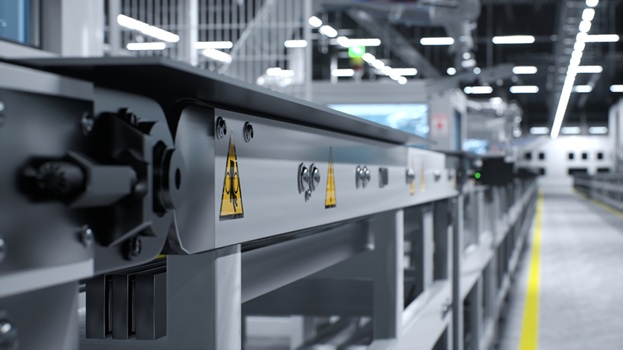Lithium-ion production is all about precision and the driest air in the plant is often the most critical factor. Some moisture might trigger side reactions, corrode metals, and degrade cell life before packs even leave the line. This article discusses how effective humidity management, and the deliberate design of production facilities promote safer practices from slurry mix to seal. This article also identifies actionable controls that engineering and EHS teams can employ for dry room operations without impacting throughput.
Why Humidity Control Matters
Moisture is a reactive contaminant in lithium systems. Even parts-per-millions of waters can degrade electrolyte salts and create acids that attack current collectors and separators. Currently, construction and commissioning of modern gigafactories tackle moisture with strict dew-point control and airflow strategies to protect processes, people, and product. You can visit this site for more details.
- The lower the dew point when producing battery electrolyte (–40 °C or lower), the lower the likelihood of hydrolysis of salts and formation of HF.
- Stable, even airflow (without turbulence) eliminates microclimates surrounding glove ports and tooling.
- Desiccant dehumidification systems stabilize conditions across door cycles and shift changes.
- Dry room installation in vented temperature and humidity-controlled cleanrooms designed and built to custom specifications ensure that the dry zone meets ISO cleanliness requirements.
What Happens If Moisture Enters Batteries?
When water reaches the electrolyte, lithium salt can hydrolyze into acidic species that corrode copper and aluminum foils. Corrosion causes increased impedance, generates heat during formation, and can drop or shed particles that can protrude through separators.
Moisture, when mixed with active materials, physically creates gas which will expand pouches or can create internal stress within winding fixation. Over time the cell will form lithium plating and a non-uniform SEI, both of which will increase the chance of internal short circuits. Put simply, a couple of milligrams of water at coating or assembly can create or precipitate thermal events well downstream of the offending moisture.
Common Safety Risks in Battery Production
Safety managers in battery production dry room will track hazards that are directly related to humidity drift and airflow anomalies. The risk will increase when ambient dew point rises, since by-products, moisture and by-product mobilities will be elevated, creating a wider risk envelope around personnel and equipment. A systematic EHS plan which connects environmental flow data and alarms to interlocks and hold procedures can reduce risk.
- Ineffective door seals or plastic wrap on a bag/pallet will allow HF generation from salt hydrolysis, which can elevate corrosion and respiratory exposures.
- Copper dissolution and redeposition can initiate internal shorts during formation.
- Static discharge (ESD) from the process becomes more likely with uneven or inadequate drying of the various zones of drying and processing.
- Particle shedding from worn tooling or mis-setup pressurized cascades can end up migrating much further.
- Off-spec cells may swell and vent which may cause stresses to stored arrays and impacts on fire suppression plans.
Case Examples of Dry Room Failures
As an example, in an Assembly cell, a weekend leak had system seal and support issues, and the next day on ramp up, the humid ambient air was pushed into the dry room enclosure. The exposure at ambient dew point for only fifteen minutes was enough to bring the dew point up by 10 °C in a matter of a few minutes. The result was a spike in HF levels during the electrolyte fill, and a wave of swelling returns two weeks later.
In a different plant, a misconfiguration of pressure escalators resulted in powder fines from mixing being pulled into stacking. The employee incidentally raised elevated particle counts, and days later a work order gathered together a cluster of separator punctures and ensuing scrap. These incidents were attributable to a failure of equipment; they were partly a failure of the system designs. Specific costs were then the scrap and rework costs; but the secondary cost was a re-emergence of a lack of confidence in the process window.
Preventing Long-Term Performance Issues
Endurance starts with the environment. Teams that are successful at linking their process, controls on their rooms, and room controls to integrated systems of automation, have fewer latent defects in the field. Their internal controls also become safer to use and rely upon for internal maintenance, recoveries, and emergencies.
- Map critical process step in their respective rooms, and where there are potential dew point variations during critical steps (coating, stacking, electrolyte fill, sealing).
- Eliminate the entanglement of hold and reject logic with separate dual-sensor cross-validated monitoring and trend alarms.
- Engineer pressure cascades and airlocks to force those things assigned to them to move without reverse flow.
- Specify humidity-controlled dry rooms as part of the gigafactory’s overall environmental controls, not as an add-on.
- Plan for average lifecycle of the maintenance of filters, desiccant changeouts, calibration of systems, and equipment for lifecycle planning reductions from power dips.
By treating humidity control and monitoring as process equipment – not simply HVAC for factory-sizing – it is successful in protecting people and product. The intention of humidity-controlled dry rooms in any design can be streamlined into a kit with custom design-build cleanrooms so that reactions stay chain locked into the chemistry, not the air, while providing a safer cell with tighter and more repeatable performance.


